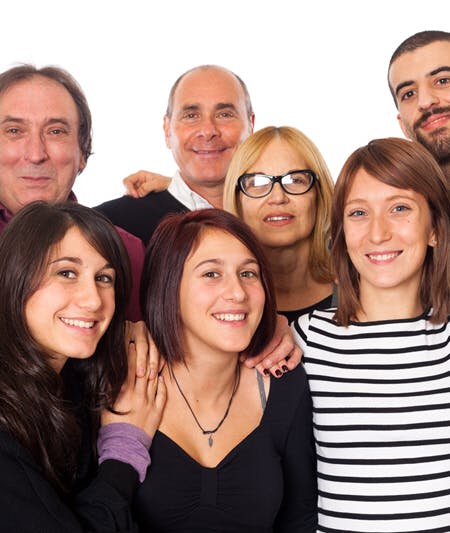Ready to unleash your superpower? Create the life you want and deserve!

My Approaches
Theoretical approaches are the backbone of the therapeutic process.

All therapists come to every session with a roadmap, so to speak, guiding them through the process of understanding clients and their problems and developing solutions for them. Figuratively speaking, it’s like having an operating system to manage guidance through the therapy process.
Early in our education, aspiring therapists are exposed to hundreds of theories, falling into a handful of broad categories so that we can determine which most appeal to us personally. The purpose is to provide a framework to interpret client behavior, thoughts, and feelings and to help them navigate the therapy process from the initial session to post-treatment.
Clients don’t know all this programming is running as a background process to their therapy. It isn’t a commonly asked question to add to my FAQ, but theoretical approaches are understandably an integral part of the therapeutic process.
The sum is greater than its parts.
For simplicity's sake, I am a systems thinker. It influences how I see each of my clients, whether they show up in my office for individual, couples, or family therapy.
A system is characterized by a group of parts interacting to form a coherent whole. Naturally, I gravitate toward Family Systems therapies to guide my work. Basically, I see the individual as an extension of the family and larger systems to which they belong.
Family systems therapy focuses on relationships, patterns, communication, and behaviors within a family unit to determine where problems originate and how those problems can be solved by adjusting certain behaviors.
Can't we all just get along?

The most appealing concept, for me, in systems psychology is interdependency. In families, the essential desire of every individual member is for stability, consistency, and predictability.
The group dynamic is co-created by all to work for all. Since we are influenced by the systemic environment in which we exist (think: a work family, a religious community, a 12-Step fellowship, a sports team, a musical band, etc.), this interdependency helps determine how problems disrupt the system and solutions restore stability.
We learn how to behave in the world based on the kinds of relationships we formed within our family of origin. There is a saying, “How you do one thing is how you do all things.”
Seen through a systems lens, this phrase illustrates what happens in our lives. We tend to replicate the systems we grew up in when interacting with our other systems long after leaving our homes. So even though you don’t plan to come to therapy to talk about things that happened years ago, the system's framework holds space to look backward to understand how to solve a problem you have today.
For example, imagine a baby’s mobile. When balanced, the mobile hangs peacefully over the infant’s crib. When the baby reaches up and touches just one of its parts, the whole mobile begins moving. It will keep shifting and shaking until it finally regains the peaceful balance from before the baby touched it.
Moving that single component of the entire mobile impacted every other interconnected and interdependent part, and the system worked with itself to find stability again.
Inside Out – Internal Family Systems

As a systems psychologist, I was drawn to Internal Family Systems (IFS) like a moth to a flame. I am a Level II-trained and approved IFS therapist in the process of IFS certification.
Again, just as family systems theory recognizes distinct individuals with roles, expectations, and needs interrelated to create an emotional unit of the family dynamic, the IFS model reasons that every person is made up of a core “Self” and multiple “parts” that make up the whole individual.
Within us, there are many different parts. Just like in a choir, there is a multitude of voices. We are each a choir unto ourselves.
Just as parents try to guide their children in families, the core Self (which I describe as our recognizable “essence”) and what IFS terms “Self Energy” will guide all the parts within. Without parents (or adults), children would be in chaos.
The same goes for self-energy. Self leads all the multiple parts. Back to our choir metaphor, Self is like the conductor harmonizing all the voices.
All these interior “parts” have roles and distinct characteristics to help individuals navigate the world. This model is non-pathologizing, saturated with compassion, and has no agenda. The client controls their internal system, and their core “Self” innately knows how to heal to become more integrated and whole.
Have you ever had an internal dialogue that seems like you have two different opinions about something? For example, let’s say you want to lose five lbs. by summer. “Part” of you wants to eat the cinnamon roll for breakfast, while another “part” wants to stick to the plan to reach your weight goal. One part wants to help you relax, and another wants you to stay focused. The parts may not like one another but attempt to help you. Like a loving parent, Core Self can hear and see the value in both parts with great understanding and compassion.
Curious? Check out the IFS Institute for more detailed information. Also, watch the Pixar movie “Inside Out.” This was an unintentional yet accurate illustration of how IFS operates.
EMDR

Eye Movement Desensitization and Reprocessing (EMDR) is a psychotherapy method for helping people heal from trauma and recover from other distressing life experiences. Unlike most other therapies, EMDR allows the brain to return to its natural healing process. I am a Level I Trained and EMDR-ia approved EMDR clinician.
No detailed accounts of traumatic memories or distressing experiences. No homework between sessions. Not managing the emotional backlash resulting from an experienced trauma.
Like the brains of all other animals, human brains are wired to recover naturally from traumatic events. When something upsetting happens, alerting the body’s natural stress response, the brain runs its catalog of memories to determine the level of danger.
Fight, flight, and freeze survival instincts help us manage distress, but sometimes those traumatic events are not spontaneously processed and get stuck, frozen in time within. When going about your daily life, you might be retriggered, and that traumatic memory returns with the technicolor – sights, sounds, smells, feelings – just as if it is happening again.
EMDR is a process to “unfreeze” the distressing memory. Using specific techniques designed for repetitive cycles of bilateral stimulation, clients process a specific memory until the event becomes less disturbing, with the goal for the memory to become neutral and removed from the brain.
Bilateral stimulation awakens the whole brain by crossing between the right and left brain hemispheres, assisting its natural ability to file memories appropriately in the brain and body. This process is intended to replicate the REM-sleep cycle (Rapid Eye Movement), where the brain organically processes the day’s events overnight.
EMDR therapy can stand alone as its own treatment but is also a remarkable supplement to traditional psychotherapy. Research indicates EMDR can be completed in fewer sessions than other therapies.
Feel to Heal - Somatic Experiencing

Somatic Experiencing (SE™), the life’s work of Dr. Peter Levine, is a body-oriented therapeutic model for healing trauma and other stress disorders. I am currently in Year 2 of the three-year comprehensive training journey to become a certified Somatic Experiencing practitioner.
The body and mind respond when a person experiences a stressful or traumatic event. Somatic experiencing is based on the theory that traumatic memories can get trapped in our physical body and lead to physical, psychological, and emotional symptoms long after the danger of that traumatic event has passed. The idea is that by becoming more aware of the sensations in the body and learning how to use the human body’s natural recovery abilities to heal trauma, those traumatic memories can be processed and released, relieving the symptoms.
I look forward to deep diving into the Somatic Experiencing training. I wholeheartedly believe that our bodies hold the answers to many of our psychological obstacles and mental issues. It is important to slow down, quiet the mind, listen to our bodies, and feel the messages they send to heal from traumatic experiences.
If you have additional questions and want to determine if we are a good fit based on my modalities, please call 530.208.9424 or email lisaolsonmft@gmail.com with any questions and schedule a free 15-minute consultation now.